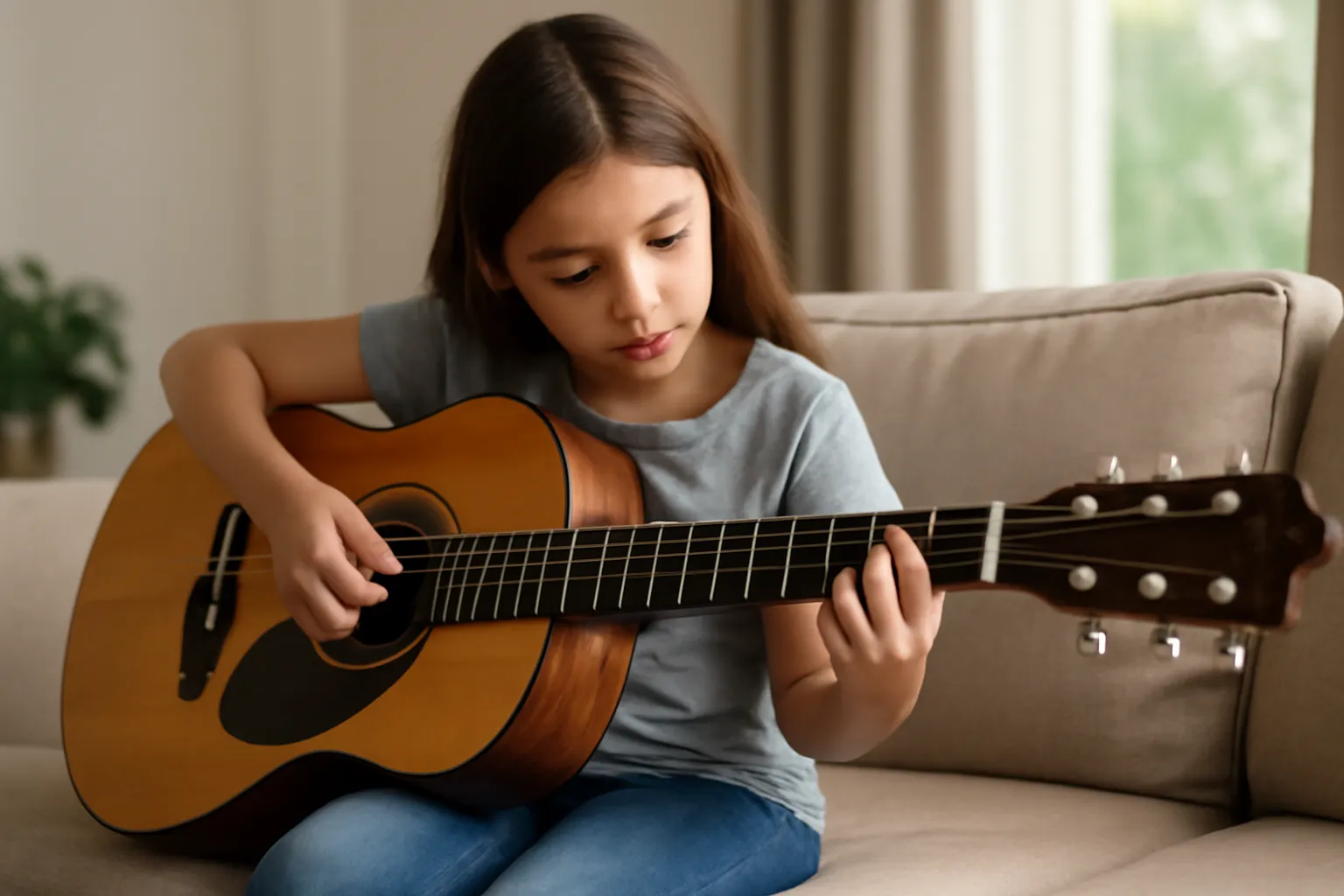Are you thinking about getting your elementary school child into guitar? How can self-study help them, and what are some tips and recommendations? Discover how to make guitar learning fun and effective for your child!
Introduction
Learning the guitar can be an exciting and fulfilling journey for elementary school students. Whether you’re a parent looking to introduce your child to music or a young learner eager to pick up a new skill, understanding how to approach guitar lessons in a way that’s both engaging and effective is key. This article explores the essential elements of learning the guitar as an elementary school student, focusing on self-study, the right tools, and additional recommendations to support their learning journey.
Learn Elementary School Student Guitar
Guitar lessons for elementary school students can be an enriching experience, blending music education with cognitive development. But before diving into specific techniques or methods, it’s important to first understand the basics of guitar learning at this stage.
Why the Guitar?
The guitar is a versatile instrument that allows young students to explore a variety of musical genres, from pop to classical. For elementary school-aged children, the guitar provides an accessible introduction to music theory and rhythm. Its manageable size and relatively simple chord progressions make it an ideal choice for young learners.
Getting Started: Choosing the Right Guitar
The first step is selecting the right guitar. Children may be drawn to a specific type of guitar, but it’s essential to choose one that fits their size. A smaller, ¾ size acoustic guitar works well for most elementary school students. These guitars are lightweight, easy to handle, and have a softer sound that is easier for beginners to play. Ensure the guitar is properly tuned, as learning on an out-of-tune instrument can be discouraging.
Basic Guitar Techniques for Beginners
When starting out, focus on simple techniques:
-
Learning Basic Chords Start with easy chords like G, C, and D. These are building blocks for more complex songs later on.
-
Strumming Patterns Simple down-strokes and up-strokes are the foundation of most songs. Encouraging students to play along with their favorite tunes can keep them engaged.
-
Proper Finger Placement Teach the importance of correct finger positioning on the fretboard to avoid bad habits.
-
Timing and Rhythm Use a metronome to help the student understand timing, which is a crucial aspect of playing the guitar.
👉 Learn More About Guitar for Beginners 👈
Elementary School Student and Other Self-Study
Self-study is a critical component of any student’s learning journey, and when it comes to guitar, it can be a great way to enhance formal lessons. With the right resources, children can supplement their guitar lessons at home with self-guided learning. But how can you set your child up for success in self-studying the guitar?
Importance of Routine Practice
One of the most important aspects of self-study is consistent practice. Encourage your child to play every day, even if it’s just for 10 to 15 minutes. This helps build muscle memory and enhances their familiarity with the instrument. Set achievable goals—like mastering a simple song or improving a strumming technique—to keep them motivated.
Online Resources and Apps
There are several excellent resources and apps designed to teach kids guitar in a fun, interactive way:
-
Yousician This app offers lessons that cater to all skill levels, including for beginners. The interactive interface can make learning feel like a game, which is great for younger children.
-
GuitarTuna This app can help students tune their guitars, a key skill when learning the instrument.
-
Justin Guitar Known for his engaging lessons, Justin offers a great series of tutorials that are beginner-friendly.
By incorporating these resources into your child’s self-study routine, you can enhance their learning experience without feeling overwhelmed. Additionally, this autonomy boosts their confidence and deepens their interest in music.
Creating a Conducive Learning Environment
To support your child’s self-study, create an environment that’s conducive to learning. A quiet, distraction-free space where they can leave their guitar out and practice regularly is ideal. Make sure they have a comfortable chair, a music stand, and easy access to lesson materials.
👉 Check Out These Guitar Learning Apps 👈
Elementary School Student Guitar and Other Recommendations
While self-study and routine practice are essential for progress, other tools and recommendations can greatly enhance a young student’s guitar learning experience.
Incorporating Fun into Learning
Children learn best when they are having fun, so it’s important to make guitar practice an enjoyable activity. Start with simple, familiar songs that they love. Play along with them, or better yet, have family jam sessions! This can help with rhythm, timing, and teamwork, all while making the experience more engaging.
Group Lessons and Social Learning
In addition to one-on-one lessons, group lessons can offer students the opportunity to collaborate with peers. Playing in a group can teach kids how to listen, stay in sync, and harmonize, offering a sense of accomplishment and camaraderie. Look for local music schools or online platforms that offer group guitar lessons for young learners.
Guitar Accessories for Kids
Certain accessories can make the learning process smoother and more fun:
-
Guitar Picks Invest in a few brightly colored, kid-friendly guitar picks that are easy for small fingers to grip.
-
Guitar Strap A comfortable strap can help children play standing up, making the learning process more dynamic.
-
Footstool A small footstool can help them sit correctly while playing, which helps prevent strain and builds good posture.
👉 Discover Fun Guitar Accessories for Kids 👈
Conclusion
Learning the guitar is an enriching and rewarding experience for elementary school students, but it’s essential to foster the right environment and use the right tools. By starting with the basics of the guitar, supporting their self-study efforts, and incorporating fun, social elements, your child can embark on a musical journey that is both educational and enjoyable. Encourage their growth, be patient, and most importantly, celebrate their progress, no matter how small.
“Music can change the world because it can change people.” — Bono






